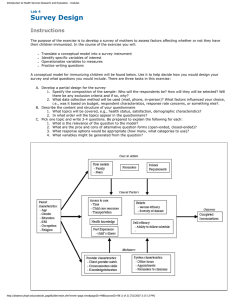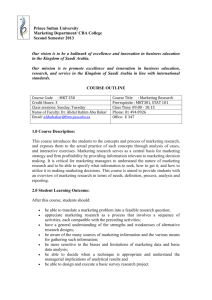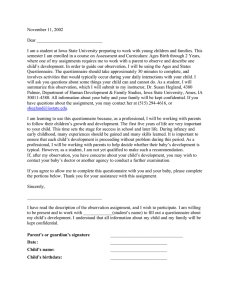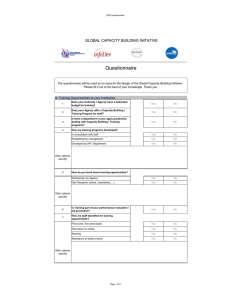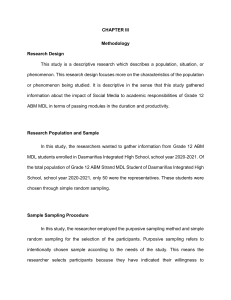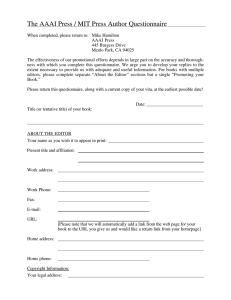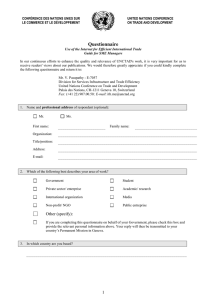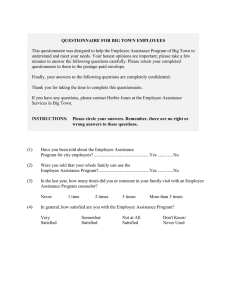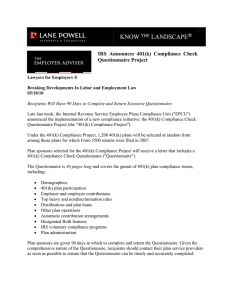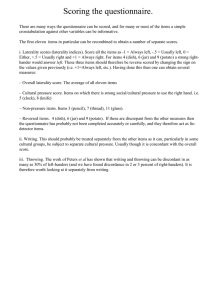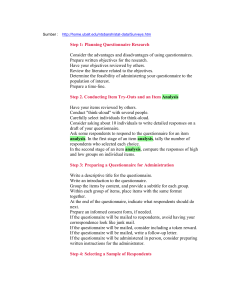Research Methods
advertisement
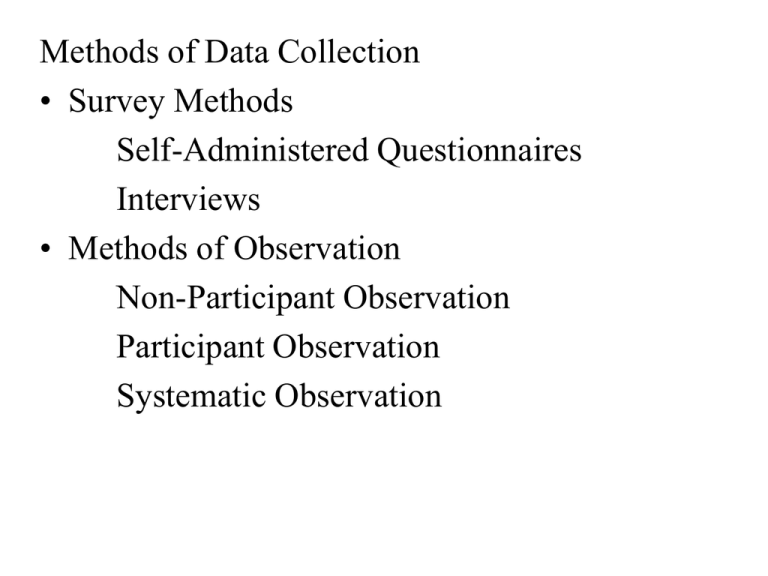
Methods of Data Collection • Survey Methods Self-Administered Questionnaires Interviews • Methods of Observation Non-Participant Observation Participant Observation Systematic Observation Unobtrusive Data Gathering Techniques • Accretion Measures • Available Materials -- and Content Analysis Methods of Analysis Qualitative Analysis • Emphasis on description, meaning, • Historical Analysis • Comparative Analysis • Content Analysis (mixed method) themes MEASUREMENT AND QUESTIONNAIRE CONSTRUCTION: SOME PRINCIPLES FOR ASKING QUESTIONS. • Questions vs. statements (e.g., likert scale type items). • Open-ended vs. closed-ended questions. • Make items clear. (Pretest the questionnaire to test for clarity of questionnaire items.) • Avoid Double-Barreled Questions. •Respondents Must Be Competent to Answer. •Questions Should be Relevant. •Short Items Are Best •Avoid Negative Items. •Avoid Biased Items and Terms. MEASUREMENT •Single vs. Multiple Indicators •Reliability and Validity QUESTIONNAIRE FORMAT •Formats for Responses ORDERING OF THE QUESTIONS FACTORS AFFECTING THE RESPONSE RATE OF MAIL SURVEYS SOME QUESTIONS YOU NEED TO ASK WHEN UNDERTAKING SOCIAL RESEARCH: ! What is (are) your research question(s)? (Be as precise as possible.) ! What are the key variables you need to collect information upon? (A measurement question.) ! What do you expect to find? (What is your hypothesis?) ! How will you test your hypothesis(es)? (How will you address your research question)? ! How will you measure the variables you have decided to examine? (This involves the issue of operationalization.) ! What is the best method for collecte data to address your research question? (Is survey research the best way of answering your question? This is a research design question.) ! Are there possibilities to use triangulation? (Can you collect data thru multiple methods; e.g., in addition to some form of survey research, can you make direct observation, use available data, can you engage in other forms of unobtrusive data collection). ! What is the unit of analysis you are interested in? (E.g., individuals, groups, provinces). ! What population are you interested in generalizing to? (This is a different question than the previous one.) ! What is your sampling frame? ! What type of sampling procedure do you intend to employ? ! What is your response rate? ! Is the main purpose of your research descriptive or explanatory? ! How will you analyze your data? ! Will you be doing univariate, bivariate, or multivariate analysis? ! What relevant sub-groups should you consider in your analysis? ! What comparison data is available. ! Are your findings mainly applied, or are there broader social trends, or theoretical explanations that may be relevant to consider? ! How will you present your findings? Quantitative Analysis Secondary Analysis • Statistical Analysis of Primary Data Some Statistical Measures • Central Tendency: mean, median, mode • Measures of Variability or Dispersion: range, standard deviation, interquartile range • Measures of association: chi square, Pearson's correlation

